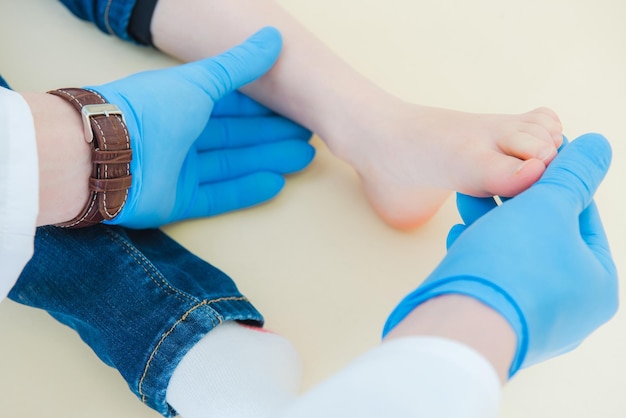Welcome to Winter!
Whether you like it or not- tis the season for dry skin. Dr. Bradley has treated patients who endure harsh witners up north. Come into Achilles Foot & Ankle- Mechanicsville and see what his secret is to keeping his patients feet moisturized.
Moisturizing treatments in the form of creams, lotions, and ointments can help retain moisture in the skin. This may prevent the skin from drying out and cracking. Moisturizing treatments can also help fix skin that is already cracked.
In mild cases of cracked heels, moisturizing two or three times per day may fix the problem. Rubbing any calluses gently with a pumice stone and applying a moisturizer can also help. However, be careful not to overuse the pumice stone, which can make cracked heels worse.
The following steps may help treat cracked heels:
1. Using an emollient or humectant moisturizer
Emollients penetrate the skin and reduce water loss. They fill the gaps between skin flakes, which makes the skin feel smooth, soft, and flexible. They help to reduce water loss in the skin.
Humectants penetrate the outer skin layer, attract water from the air, and maintain moisture. They also help to increase the water capacity of the skin.
In dry conditions, humectants may draw moisture from the lower skin layers instead of from the atmosphere. This may result in more dehydrated skin overall. Combining a humectant with an occlusive may help seal in moisture.
2. Applying an occlusive moisturizer over the top
Once the emollient or humectant is absorbed, people can apply a thick layer of an occlusive moisturizer over the top just before bed to seal the moisture in.
Occlusive moisturizers coat the skin in a thin film that prevents moisture evaporating from the outermost layer of the skin.
Examples of occlusive moisturizers include:
•petroleum jelly
•lanolin
•mineral oil
•silicones, such as dimethicone
Petroleum jelly is considered to be the most effective occlusive moisturizer, reducing water loss from the outer skin by more than 98 percent. Although occlusives work well to lock in moisture, they can be greasy, sticky, and messy.
3. Wearing 100% cotton socks to bed
Wearing 100 percent cotton socks to bed after applying petroleum jelly to the heel may help to:
•keep the moisture in
•allow the heel skin to breathe
•prevent the bed sheets from becoming stained
The skin on the heels should soften after this routine is repeated for a few days.
100% cotton socks are available online.
4. Applying a keratolytic to thickened skin
When the heel skin is thick, applying a keratolytic may help thin it, as well as the other treatments.
Keratolytics are agents that thin thickened skin, cause the outer skin layer to loosen, and help with removal of dead skin cells. This process allows the skin to keep in more moisture.
Examples of keratolytics include:
•alpha hydroxy acids, such as lactic acid and glycolic acid
•salicylic acid
•urea
Products that contain both keratolytics and humectants may be the most useful. For example, urea is both a keratolytic and humectant that moisturizes and removes dry, cracked, and thickened skin.
5. Gently rubbing thickened skin with a pumice stone
Gently rubbing a pumice stone against the heel, once the skin is moisturized, may help reduce the thickness of the hard skin and calluses. Pumice stones are available at any of the Achilles Foot & Ankle offices.
Razors and scissors should be avoided for scraping back and cutting skin. People with diabetes or neuropathy should not use pumice stones and should instead visit a dermatologist or podiatrist.
6. Using a liquid bandage
Liquid, gel, or spray bandages can be used to cover the cracked skin. These may provide a protective layer over the cracks, help reduce pain, stop dirt and germs entering the wounds, and aid faster healing.
People should see a podiatrist or dermatologist if their heels are severely cracked, or if self-treatment does not improve cracked heels after a week.
Medical treatments
In severe cases of cracked heels, or if medical care is required, a doctor may:
•remove dead skin
•prescribe stronger softening or removal agents
•apply medical glue to seal cracks
•prescribe an antibiotic if there is an infection
•strap the heel with dressings or bandages
•recommend shoe inserts, heel pads, or heel cups
help the patient change how they walk.
To schedule an appointment with Dr. Bradley in our Mechanicsville location, call (804)514-1965 or schedule an appointment online at www.achillesfootandankle.com.






